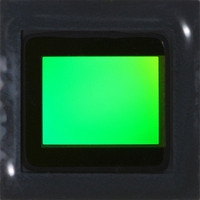MT9P401I12STC Aptina LLC, MT9P401I12STC Datasheet - Page 47

MT9P401I12STC
Manufacturer Part Number
MT9P401I12STC
Description
SENSOR IMAGE CMOS 5MP 48LCC
Manufacturer
Aptina LLC
Type
CMOS Imagingr
Series
DigitalClarity®r
Specifications of MT9P401I12STC
Pixel Size
2.2µm x 2.2µm
Active Pixel Array
2592H x 1944V
Frames Per Second
60
Voltage - Supply
2.6 V ~ 3.1 V
Package / Case
48-iLCC
Sensor Image Color Type
Monochrome
Sensor Image Size
2592x1944Pixels
Operating Supply Voltage (typ)
1.8/2.8V
Operating Supply Voltage (max)
3.1V
Operating Temp Range
-30C to 70C
Package Type
ILCC
Operating Temperature Classification
Commercial
Mounting
Surface Mount
Pin Count
48
Lead Free Status / RoHS Status
Lead free / RoHS Compliant
Other names
557-1263
MT9P401I12STC
Q3412742
MT9P401I12STC
Q3412742
Available stocks
Company
Part Number
Manufacturer
Quantity
Price
Part Number:
MT9P401I12STC
Manufacturer:
APTINA
Quantity:
20 000
Operating Modes
Table 15:
PDF: 09005aef82acb06f/Source: 09005aef81a4a477
MT9P401_DS_2 - Rev. B 9/07 EN
Mode
ERS Continuous
ERS Snapshot
ERS Bulb
GRR Snapshot
GRR Bulb
Operating Modes
Settings
Default
Snapshot = 1
Snapshot = 1;
Bulb_Exposure = 1
Snapshot = 1;
Global_Reset = 1
Snapshot = 1;
Bulb_Exposure = 1;
Global_Reset = 1
Note:
1. Wait for the first trigger, then start the exposure.
2. Wait for the second trigger, then start the readout.
The exposure time is calculated by determining the reset time of each pixel row (with
time 0 being the start of the first row time), and subtracting it from the sample time.
Under normal conditions in ERS modes, every pixel should end up with the same expo-
sure time. In global shutter release modes, or in row binning modes, the exposure times
of individual pixels can vary.
In global shutter release modes (described later) exposure time starts simultaneously for
all rows, but still ends as defined above. In a real system, the exposure would be stopped
by a mechanical shutter, which would effectively stop the exposure to all rows simulta-
neously. Because this specification does not consider the effect of an external shutter,
each output row's exposure time will differ by
Global shutter modes also introduce a constant added to the shutter time for each row,
because the exposure starts during the global shutter sequence, and not during any
row's shutter sequence. For each additional row in a row bin, this offset will increase by
the length of the shutter sequence.
In Bulb_Exposure modes (also detailed later), the exposure time is determined by the
width of the TRIGGER pulse rather than the shutter width registers. In ERS bulb mode, it
is still a multiple of row times, and the shutter overhead equation still applies. In GRR
bulb mode, the exposure time is granular to ACLKs, and shutter overhead (and thus
shutter_delay) has no effect.
In the default operating mode, the MT9P401 continuously samples and outputs frames.
It can be put in "snapshot" or triggered mode by setting snapshot, which means that it
samples and outputs a frame only when triggered. To leave snapshot mode, it is neces-
sary to first clear Snapshot then issue a restart.
When in snapshot mode, the sensor can use the ERS or the GRR. The exposure can be
controlled as normal, with the shutter_width_lower and shutter_width_upper registers,
or it can be controlled using the external TRIGGER signal. The various operating modes
are summarized in Table 15.
All operating modes share a common set of operations:
In ERS bulb mode, SW must be greater than 4 (use trigger wider than
Description
Frames are output continuously at the frame rate defined by
and the exposure time is electronically controlled to be
Frames are output one at a time, with each frame initiated by a trigger. ERS is
used, and the exposure time is electronically controlled to be
Frames are output one at a time, with each frame's exposure initiated by a trigger.
ERS is used. End of exposure and readout are initiated by a second trigger.
Frames are output one at a time, with each frame initiated by a trigger. GRR is
used. Readout is electronically triggered based on SW.
Frames are output one at a time, with each frame initiated by a trigger. GRR is
used. Readout is initiated by a second trigger.
Micron Confidential and Proprietary
MT9P401: 1/2.5-Inch 5Mp Digital Image Sensor
47
Micron Technology, Inc., reserves the right to change products or specifications without notice.
t
ROW from the previous row.
©2007 Micron Technology, Inc. All rights reserved.
t
EXP.
t
t
FRAME. ERS is used,
EXP.
t
ROW * 4).
Features






















